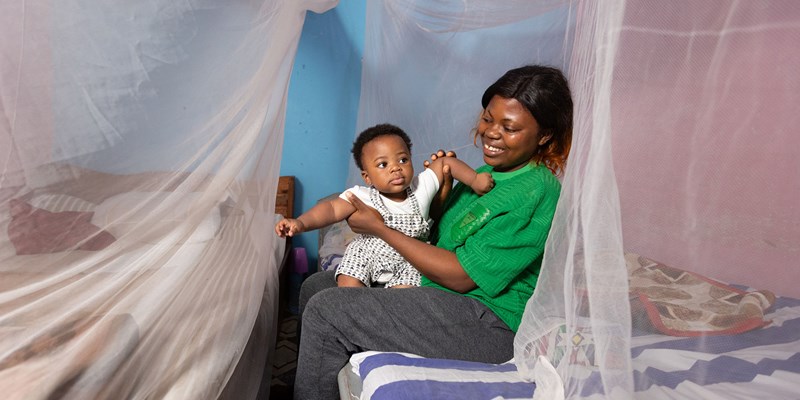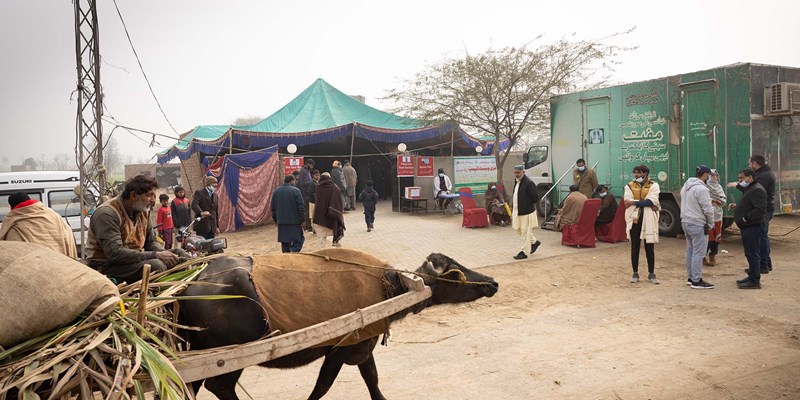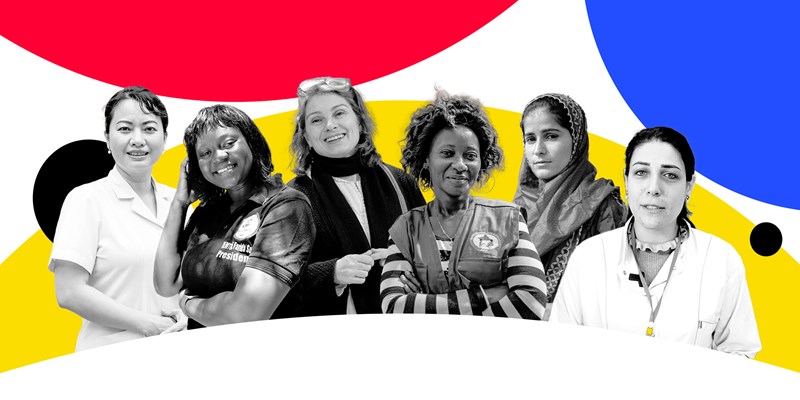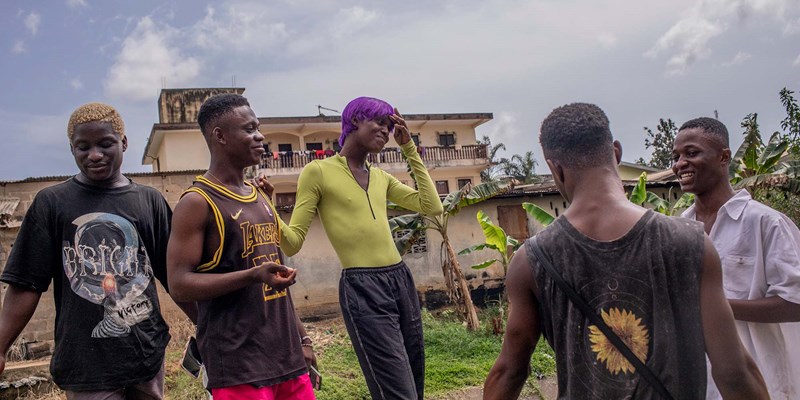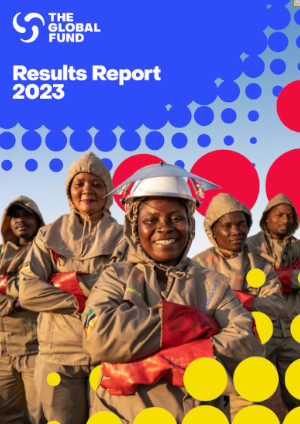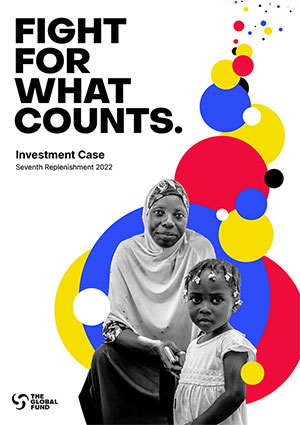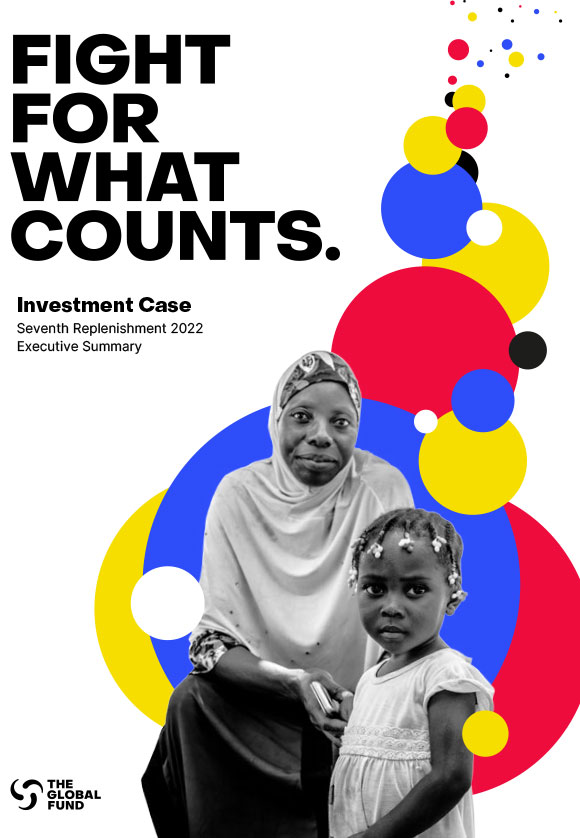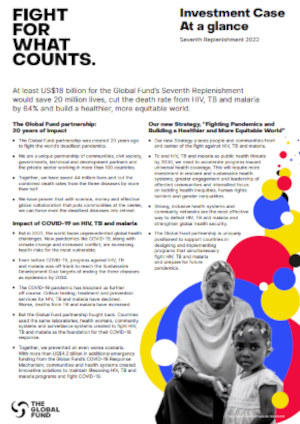The Global Fund programs exceed targets
23 August 2005
300 Programs Drive Global Scale-up Against AIDS, TB and Malaria
103% of AIDS treatment targets achieved; 156% of Malaria Treatment Targets
Fragile States Fare Better Than Expected
Geneva – Three years after its creation, the Global Fund to Fight AIDS, Tuberculosis and Malaria is proving to be a key engine behind the scale-up of the fight against the three pandemics worldwide. Despite an average age of only 15 months, Global Fund-financed programs support 220,000 people on AIDS treatment and have provided treatment for 600,000 patients with TB and 1.1 million patients with malaria. These results are ahead of mid-year targets for 2005.
The Global Fund currently contributes a fifth of all external resources worldwide to fight HIV/AIDS, two-thirds of all external resources against TB and well over half against malaria.
An analysis of the Global Fund’s grant portfolio shows that of the 74 grants that have reached 18 months of age, 80 percent have met or exceeded targets and that taken as a whole, the 74 grants have exceed all targets except those for the distribution of insecticide-treated bed nets (ITNs).
A separate analysis of grants to “fragile” states (defined as states that ”cannot or will not deliver core functions to the majority of [their] people, including the poor”) shows that grants to such states perform only marginally less well than grants to other low and middle-income countries.
“It is extremely gratifying to see that our grant portfolio is doing well – even better than expected,” said Dr Carol Jacobs, the Chair of the Global Fund’s Board. “It indicates that the Global Fund’s financing structure, which lets countries design and implement their own programs and which rewards good performance, works even in countries that traditionally are not able to use external financing well.”
Headline Results
| June 2005 | Dec. 2004 | 6-month increase | |
| HIV: People on ARV treatment | 220,000 | 130,000 | 69% |
| TB: People treated under DOTS | 600,000 | 385,000 | 56% |
| Malaria: Insecticide treated nets distributed or re-treated | 3,100,000 | 1,350,000 | 130% |
“We are financing programs to most of the world’s poorest countries, and the health sector traditionally receives the smallest part of these countries’ budgets,” said Professor Richard Feachem, the Executive Director or the Global Fund. “Starved of educated personnel and infrastructure, these countries are rarely well prepared to turn large new resources into results quickly. The fact that these programs have achieved substantial results after such a short time is a tribute to the tremendous efforts made by thousands of health workers operating under extremely difficult conditions.”
Performance Against Targets of 74 Grants After 18 Months of Activity
ACT: Artemisinin-based combination therapy;
ARV: Antiretroviral therapy;
DOTS Directly Observed Treatment, Short course (referring to the internationally-approved tuberculosis treatment strategy);
MDR-TB: Multidrug-resistant tuberculosis;
VCT: Voluntary Counseling and testing (for HIV)
The analysis published today is the third in a series of reports on Global Fund performance. The full text of “Sustaining Performance, Scaling Up Results: Third Progress Report 2005” is available here.
“The Impact and Results of the Global Fund Model: Aid in Fragile States” is available here.
While the latest progress report points to a steady improvement in results and a persistent trend of a high-performing grant portfolio, it stresses that the Global Fund needs to sharply increase the rate of program acceleration in the next four years if it is to achieve its five-year targets.
Annual targets have been set – based on grant agreements – for the scaling up of Global Fund-supported grant activities in order to reach 1.6 million people with ARV treatment for AIDS and 3.5 million people with TB treatment, and to distribute or re-treat 108 million ITNs to protect families from malaria over the five-year lifespan of all grants approved to date. If these targets are reached, this will increase global coverage two or more times from current levels.
While most programs financed by the Global Fund have a five-year time-frame, the Global Fund initially commits funds only for the first two years. Continued funding depends on performance towards agreed-upon targets, measured when the grants have been in operation for 18 months. Grants are graded according to their performance, and decisions on continued funding are taken based on the performance-grading combined with an assessment of contextual information. So far, 70 of the 74 grants that have gone through this process have received commitments of continued funding for years three through five (“Phase 2”); one has been terminated and three are still under consideration by the Global Fund Board.
Nineteen of the 74 grants assessed for Phase 2 funding were from fragile states. While the analysis cautions that this sample size is too small to draw strong conclusions, it indicates that the incentives of performance-based funding and innovative collaborations between public and private sectors are factors that have led to successful performance of grants in states where such performance is unexpected. The study of grants from fragile states will continue as the number of grants that undergo Phase 2 review increases. One-third of the Global Fund’s total portfolio of US$ 3.7 billion has been committed to states determined to be fragile.
The Global Fund Portfolio
Global Fund grants enable countries to scale up their fight against the three diseases in a sustainable way by strengthening health systems and paying for drugs, diagnostics, mosquito nets and other commodities.
The Global Fund has allocated US$ 3.1 billion for the first two years of 316 programs in 127 countries with a total five-year value of US$ 8.1 billion. Of the US$ 3.1 billion committed over the first two years, 56 percent goes to fight HIV/AIDS, while 13 percent goes to fight TB and 31 percent to malaria. Sixty percent is spent in sub-Saharan Africa.
A total of US$ 1.4 billion has been disbursed to programs so far.
Expenditure targets for Global Fund grants are 49% for drugs and related supplies, 20% for human resources, 13% for physical infrastructure, 6% for monitoring and evaluation, 7% for administration and 5% for other purposes.
Projected outcomes over five years
The following are the projected outcomes of programs financed by the Global Fund over their five-year life-spans. The programs are on track to reach these targets set for HIV/AIDS and TB, but are behind on targets for malaria. A substantial effort is underway to ensure that malaria targets are reach by the end of the programs’ lifetime.
HIV/AIDS
- 1.6 million people on antiretroviral treatment, a six-fold increase over current coverage in developing countries
- 52 million clients reached with voluntary counseling and testing services for HIV prevention
- More than one million orphans supported through medical services, education and community care (only Rounds One through Three)
TUBERCULOSIS
- 3.5 million additional tuberculosis cases treated successfully under the DOTS treatment strategy after case diagnosis
- Quadrupling of treatment of multidrug-resistant tuberculosis, with more than 12,000 new treatments
MALARIA
- Delivery of 145 million artemisinin-based combination drug treatments for resistant malaria
- 108 million bed nets financed to protect families from transmission of malaria
HIV/AIDS
Global Fund-financed HIV/AIDS programs are aiming to build up a sustainable effort to turn the tide of the HIV/AIDS pandemic and stop it in its tracks where it is still in its early stages. Resources from the Global Fund therefore go to a wide range of activities, from training and infrastructure strengthening to expand testing, treatment and care to large-scale prevention programs, and care and support for orphans.
To date, 397,000 children orphaned by AIDS have been provided with social, medical and educational support. More than 2.5 million people have been tested for HIV and received counseling through Global Fund-financed programs, tens of millions have been reached through a wide range of prevention programs – from condom distribution and targeted support for injecting drug users and sex workers to behavior change programs and information provided through the media, schools and the entertainment industry.
AIDS treatment: A Joint Effort
Of the HIV/AIDS grants, one half of the money is dedicated towards treatment and care, while the other half is financing prevention activities and HIV testing. Global Fund grants finance HIV/AIDS treatment in over 100 countries and to date have supported national programs that provide ARV treatment for 220,000 people with a goal of reaching 400,000 by the end of the year.
The scale-up of AIDS treatment is a truly collaborative effort, where donors, international organizations and non-governmental organizations all play critical supporting roles in the impressive national campaigns of many countries to roll out treatment – often under extremely difficult circumstances.
International partners, including UNAIDS, the World Bank, the Global Fund, the U.S. President’s Emergency Plan for AIDS Relief (PEPFAR) and the World Health Organization met in December 2004 to agree on a methodology to provide consistent international figures in support of the goal of bringing three million patients on treatment by 2005. The figures released today follow this methodology.
Together, the Global Fund and PEPFAR are the major financial engines to achieve greatly increased treatment numbers over the coming years. In 15 countries, Global Fund grants and PEPFAR are supporting different parts of the same national scale-up efforts.
Tuberculosis
Tuberculosis grants are financing national efforts in high-burden countries to reach globally agreed targets for detection and successful TB treatment. Global Fund grants are also paying for a quadrupling of patients having access to expensive drugs for multi-drug-resistant TB.
So far, just over 600,000 people have received treatment under the DOTS strategy for TB control thanks to Global Fund financing. In addition, multidrug-resistant TB treatment has increased greatly through Global Fund projects, which until now has been too costly for most countries to provide.
Malaria
The Global Fund is the single largest financier of malaria-related activities globally, with financed activities focused on priorities set by the Roll Back Malaria Partnership. Funding has been predominantly invested in financing a change to new, more effective malaria drugs and providing insecticide-treated mosquito nets throughout regions with high malaria incidence. Substantial amounts are also spent on strengthening national malaria programs through improving staffing, training and infrastructure.
To date, 1.1 million people have been reached with malaria treatments (227,000 of them have received new and effective ACT treatment for drug-resistant malaria) and 3.1 million nets have been distributed. These numbers are expected to continue to rise rapidly over the coming months provided that supply-side problems with the new malaria drugs and the long-lasting pre-impregnated insecticidal nets can be overcome.
